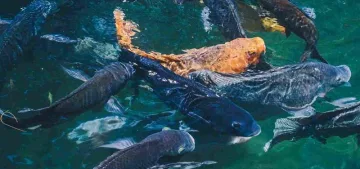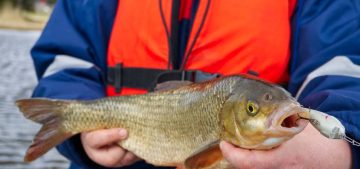Understanding the Difference Between FDX Tags, HDX Tags, Food Safe Tags and Temperature Sensing Tags
In fish and wildlife research, aquaculture and food traceability, choosing the right RFID tag is essential for accurate data collection and long-term performance. Although many tags look similar on the outside, their internal technology and intended use can be very different. Below is a clear overview of four commonly used tag types and when each is the best choice.
FDX Tags
FDX stands for Full Duplex. These tags are considered the most up to date technology in fisheries and wildlife research. They transmit continuously while receiving power from the magnetic field generated by the reader. This allows for fast detection, strong read reliability and excellent performance even when the tag is not perfectly oriented.
Over time, FDX technology has gone through many generations of improvements in chip design, sensitivity and noise rejection. Because of this evolution, FDX tags are widely considered the modern standard for PIT tagging in fish and wildlife studies. They work with any ISO 11784 and 11785 compliant FDX system and are used around the world. An example, the 12mm 134.2kHz FDX tag has had more than 17 different performance improvements in the last 25 years.
Best for
Fisheries research, wildlife monitoring, aquaculture facilities and any project that requires high reliability, speed and broad compatibility.
HDX Tags
HDX stands for Half Duplex. These tags are still used in fisheries research, although the technology itself is older and has not advanced as rapidly as FDX. HDX tags store energy from the magnetic field and release it in a short burst of transmission. This can work well in certain situations, but it also makes the tags more sensitive to environmental noise and antenna design.
In fisheries, HDX tags are less common today because FDX products have gone through many rounds of performance enhancements. Still, systems are being installed, legacy systems and long-term monitoring arrays continue to use HDX. They also remain common in livestock identification and other large animal applications.
Best for
Existing HDX based fisheries arrays, legacy monitoring systems and livestock identification programs.
Food Safe Tags
Food safe tags are engineered using materials that are safe for direct or indirect contact with food. They are built to withstand extreme temperatures, industrial cleaning chemicals and food processing environments.
Although many people associate food safe tags with food production and traceability, they also have an important role in wildlife and fisheries research. In some areas, permits or study requirements mandate the use of food safe tags because animals may be harvested for human consumption. This requirement is especially common in subsistence fisheries, mixed harvest studies and research involving species routinely caught for food.
Using food safe tags helps ensure that research does not introduce any material risks if tagged animals later enter the food chain.
Best for
Seafood and meat traceability, produce tracking and wildlife or fisheries research where harvest rules or protocols require food safe materials.
Temperature Sensing Tags
Temperature sensing tags combine standard RFID identification with a built in temperature sensor. These tags record ambient temperature at preset intervals and store the data internally until it is downloaded.
They typically measure within a range of 35 to 45 degrees Celsius. Because this range is relatively narrow, temperature sensing tags are not commonly used in fisheries research or in wildlife studies where environmental temperatures fluctuate far outside that window. Fish and many wildlife species routinely encounter temperatures below or above this range, which limits the usefulness of the data.
Instead, temperature sensing tags are most often used in controlled environments such as laboratory studies, aquaculture research tanks, small animal studies and the pet market. They work well for species or settings where body or environmental temperatures remain within a stable, predictable range. They are also used in certain commercial and industrial applications where materials or products must stay within a tight thermal range and where identification combined with temperature logging adds operational value.
Best for
Laboratory environments, warm-blooded species, small animal studies, species with stable body temperatures and commercial applications with strict temperature ranges.
Choosing the Right Tag
Selecting the right tag depends on your species, your research design and the environment you operate in. FDX tags offer modern performance and broad compatibility. HDX tags support legacy systems. Food safe tags meet regulatory or protocol requirements when harvest is involved. Temperature sensing tags are ideal for controlled thermal environments and specialized applications.







Add comment